- | 3:16 pm
This tiny cabin was built in 3 weeks and cost 30% less than a traditional house

The way we build homes is changing. In 2016, the world’s tallest modular apartment building opened in New York City. In 2018, Ikea’s experimental Space10 lab designed a modular home that cost less than $10,000. Even Disney’s new castle in Hong Kong was built using modular construction—its 13 towers were prefabricated off-site then craned into place.
Over the past few decades, modular housing has disrupted traditional construction. Now, a company called AUAR (which stands for Automated Architecture and is pronounced “our”) is betting that a localized construction process, more automation, and a robot can make modular construction even more irresistible.
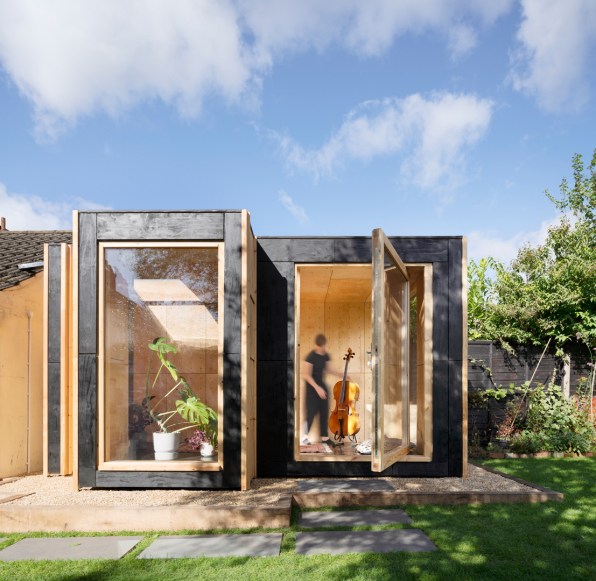
[Photo: naaro/courtesy AUAR]
In Bristol, AUAR has just completed a 107-square-foot cabin that was prefabricated using ABB robots (gigantic robotic arms similar to those used by car manufacturers) and assembled by builders on site. The cabin sits in the backyard of a house and will be used as a rehearsal studio by a cellist and double bassist, who were looking for a separate workspace. The unit was completed in three weeks (with only one week on site) and cost about 30% less to build than a traditional U.K. home. It’s the first such unit AUAR has built using this modular timber building system, but the company has half a dozen more in the pipeline across the country. Just like other forms of technology, like 3D printing homes, AUAR’s system provides a blueprint for more streamlined and sustainable homebuilding.
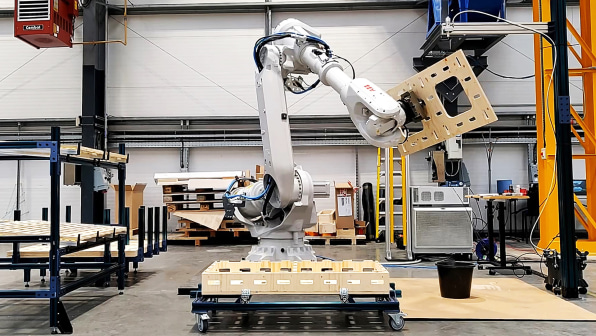
[Image: courtesy AUAR]
It all starts with a sheet of timber that is roughly 47 x 8 x 23 inches. Once the design was set, the timber sheets were sent to a local manufacturing hub in Bristol, where an ABB robot milled hundreds of these sheets down to the right size and specifications. Then, they’re assembled into “blocks” so they’re able to fit together like pieces of a puzzle. “It’s like a CNC machine, but with more flexibility,” says AUAR cofounder and CEO Mollie Claypool.
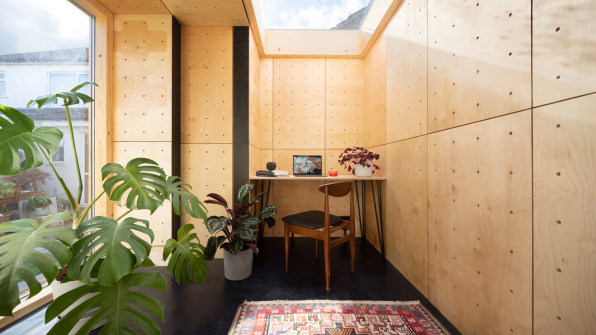
[Photo: naaro/courtesy AUAR]
Once the blocks were sent to the site, a team of builders assembled them —”like Lego,” says Claypool. You can count the number of materials needed on one hand: 95% timber, paper cellulose insulation, a recyclable epdm roof (a kind of synthetic rubber that’s durable and cost-effective), rubber flooring, and glass for the doors, windows, and the one skylight. The walls were left raw, with no other finishes. And if the clients ever want the unit to be dismantled, the timber building blocks can be taken apart by professionals and reassembled elsewhere (or repurposed for other uses).
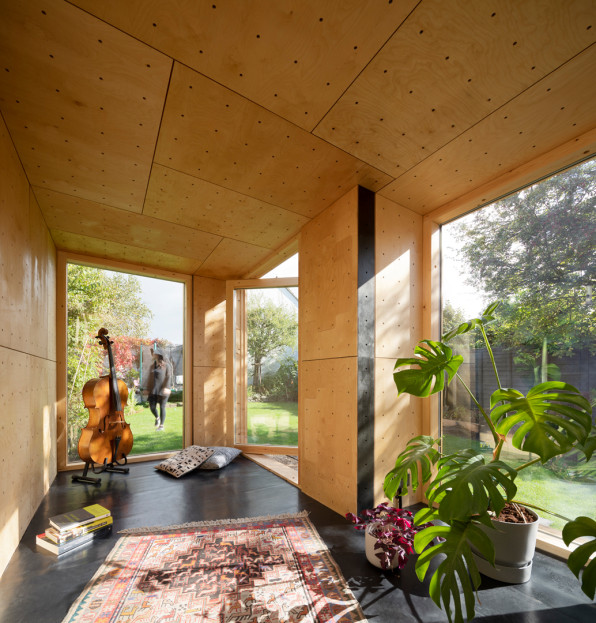
[Photo: naaro/courtesy AUAR]
This kind of building system has several benefits. First, it’s cheaper. Claypool says the clients’ budget was 15,000 British pounds (or just under $20,000), which makes it 30% to 40% more affordable than a traditional house of the same size, and about 15% cheaper than other forms of modular timber construction. “Automation provides us with a lot of freedom and the opportunity to think about how other projects will be delivered,” says Claypool.The fact that every timber sheet starts at the same size makes a radical difference. “Instead of having 10,000 unique parts, as you would in a typical way of building with timber, we have one part that has off-the-shelf fixings,” says Claypool. And because the final cost largely depends on the number of building blocks used, the architects could be fully transparent about the cost throughout the entire process.
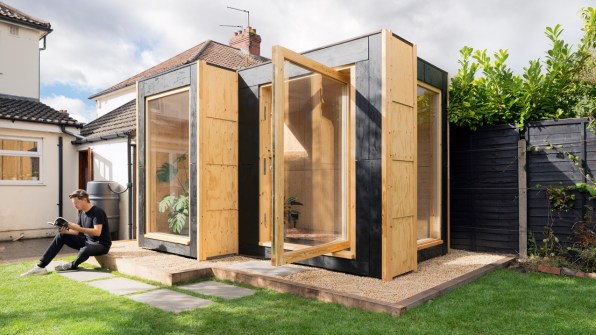
[Photo: naaro/courtesy AUAR]
Thanks to the use of robots, this method is also faster. From the first sheet of timber milled, to the last bolt screwed in, Claypool says it took about three weeks, with two weeks on site. By comparison, it takes about three months to build a small house extension in the U.K. And while, at 107 square feet, this unit is smaller than a standard parking space, Claypool says it becomes even more cost-effective as you go bigger.If every new single-family house in the U.K. was built following these principles, cities could build more affordable homes in high-demand areas. This is especially true if the units are fabricated locally. “By embedding housing production very close to those communities, we can enable people to feel like they can be part of the solution to the housing crisis,” she says.
In the next few months, AUAR has plans for half a dozen new units across the country. For now, they can only produce one unit a month, but an upcoming round of seed funding would allow them to use more robots, and hire more people. Later in 2022, they’re planning to start working on bigger units, single-family homes, and house extensions—and the time it takes for one robot to prefabricate the timber sheets will go down from two weeks to two days.








































